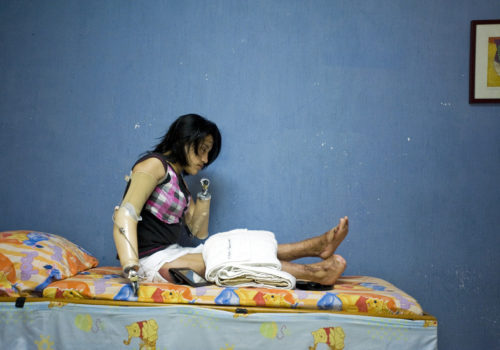In June 2012 on her 17th birthday, Cristobalina wished to have another birthday. She was celebrating with her family in their home in Caserio Panuca, a small village in Guatemala. But this had not always been the case.
She remembers that she wanted to die when she woke up with both of her hands and part of right foot amputated after an electrocution accident in November 2010. The accident happened when she touched a high-voltage wire that was not properly covered in the house where she was working as live-in housekeeper.
Since the accident, Cristobalina underwent several surgeries to release scar tissues that cause her legs to contract, and has been in physical therapy. In the course of adjusting to a new life without hands, she learned how to manage most daily tasks independently. She also taught herself to write and paint with holding pen or brush in her mouth. Cristobalina takes a great pleasure in painting and drawing and dreams about becoming a painter.
Like many other indigenous families in Guatemala, Cristobalina comes from a large family with ten children. To help family’s financial condition, Cristobalina started to live and work outside of her village since the age of 11. and had not lived with her family until after the accident.
Electrocution accident is not uncommon in Guatemala. In the burn unit at Roosevelt Hospital in Guatemala City, electrocution from high-voltage wire ranks third as a cause for admitted patients.
Many have claimed that electronic companies are to be blamed. However placing responsibilities has not been simple as report shows, many accident sites and constructions were built without permissions. There are some cases when accident victims have been successful in taking legal action. But most victims are left with lifelong scars both physically and emotionally, yet with no one to blame.
In Cristobaina’s case, the owner of the house she was working for fled without trace after the accident. Cristobalina’s family has never been able to locate him.
Hiroko Tanaka is a Japanese photographer based in Guatemala, Mexico and Japan. After 7 years in the US studying and working as a photographer for newspapers, Hiroko moved to Guatemala in late 2011, where she has worked on stories on devastating living conditions and circumstances of Guatemala indigenous community. Hiroko plans to be located in Japan for several months starting August 2013.
















